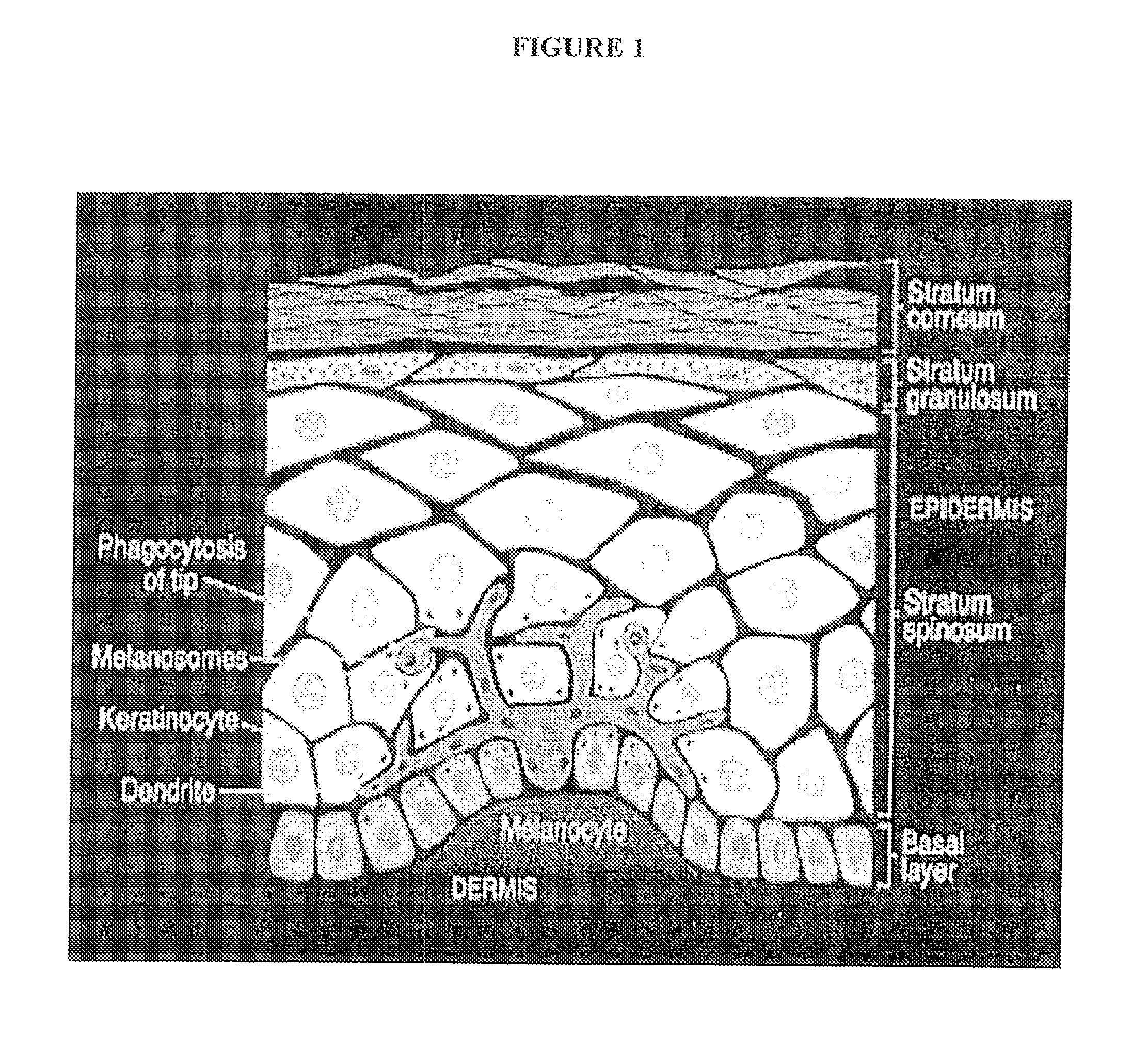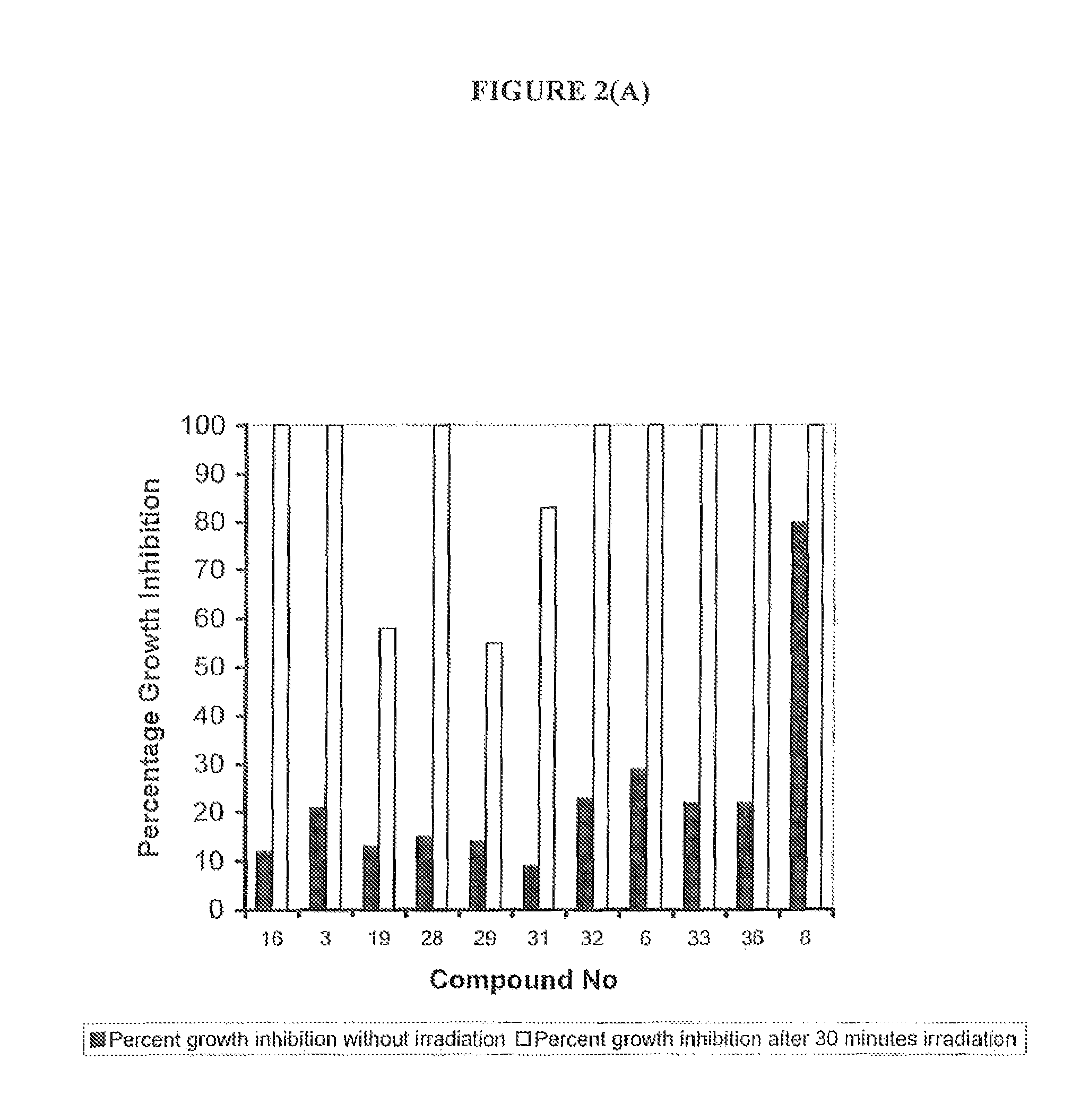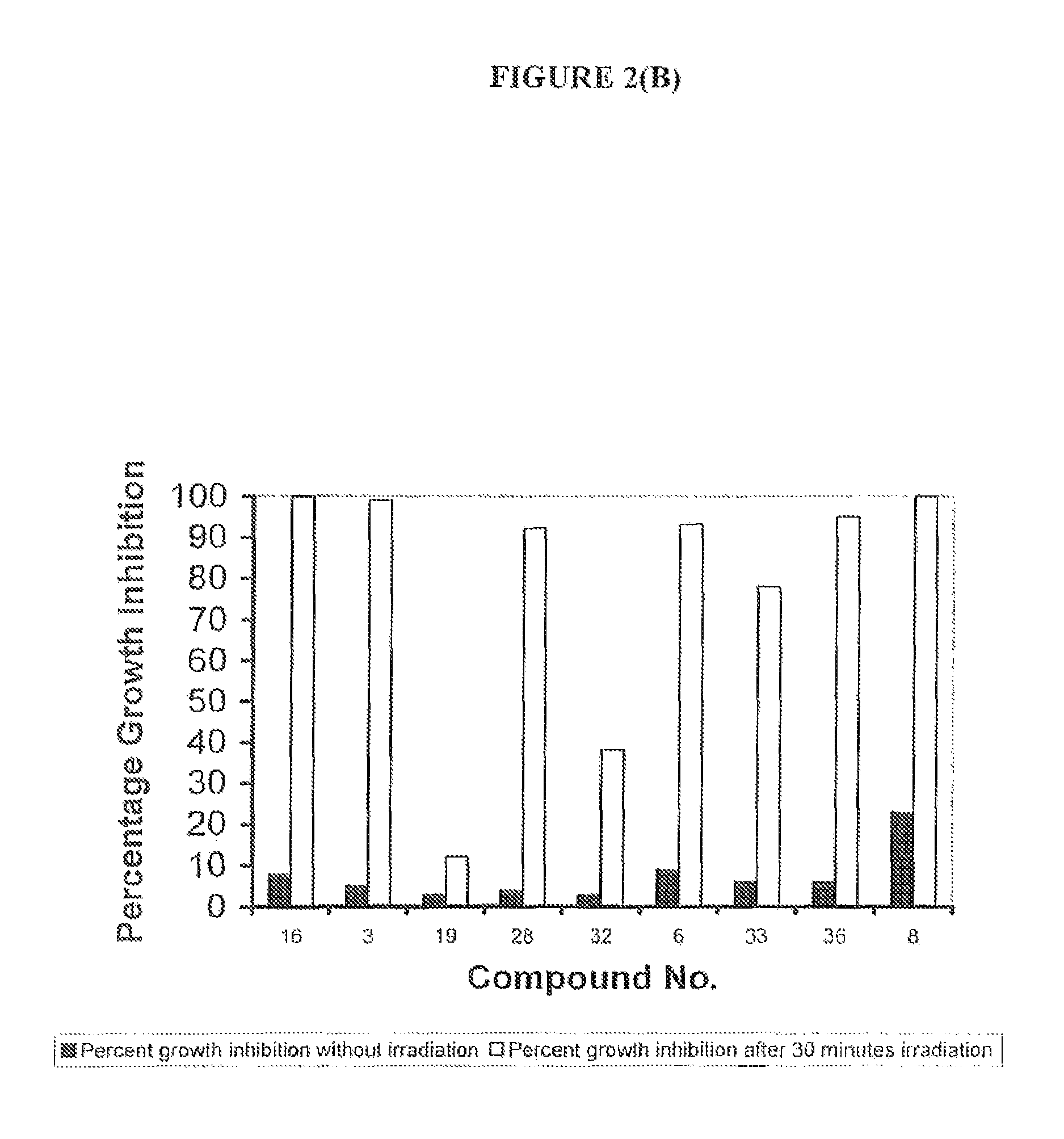Porphyrin derivatives and their use in photodynamic therapy
a technology of porphyrin derivatives and photodynamic therapy, which is applied in the direction of antibacterial agents, drug compositions, antiparasitic agents, etc., can solve the problems of limited development of additional antibiotic-resistant strains, and limited utility of known porphyrin-based photodynamic therapy agents, so as to reduce the activation of haemoglobin
- Summary
- Abstract
- Description
- Claims
- Application Information
AI Technical Summary
Benefits of technology
Problems solved by technology
Method used
Image
Examples
example a
Synthesis of Exemplary Compounds
Materials and Methods
NMR-Measurements
[0216]Proton NMR spectra were recorded on a Bruker B-ACS60 (300 MHz) instrument using TMS as internal standard. The chemical shifts are given in ppm and coupling constants in Hz in the indicated solvent. Some abbreviation for NMR: single (s), broad singlet (bs), doublet (d), triplet (t), quartet (q), multiplet (m).
Chemicals
[0217]All solvents and reagents were purchased from Aldrich, Fluka, Merck and Lancaster and used without further purification.
[0218]Dipyrrolmethane was prepared as described by C Brücker et al., J. Porphyrins Phthalocyanines, 2 445 (1998).
[0219]Column chromatography was carried out using silica gel (Merck Silicagel 60, Fluka 60, 0.040-0.063 mm) and Sephadex LH-20 (Pharmacia). All solvents (Synopharm) for chromatography were technical pure grade.
Abbreviations
[0220]DDQ: 2,3-dichloro-5,6-dicyano-p-benzoquinone
[0221]DMF: N,N-dimethylformamide
[0222]TFA: trifluoroacetic acid
Synthesis Rout...
example b
Non-Specific (Dark Toxicity) Profiles and Photodynamic Activity (Light Toxicity) Profiles of Exemplary Compounds on Bacterial Cells
Methodology
[0378]The toxic effects of exemplary compounds of the invention against two bacterial strains, the Gram negative bacterium Escherichia coli (strain ATCC 25922) and the Gram positive bacterium Staphylococcus aureus (methicillin-resistant strain ATTC BAA-44), were evaluated by measuring the extent of growth inhibition (bacteriostatic effect) and growth inhibition (cytocidal effect) in the dark and upon light exposure. Initial compound screening was undertaken using white light [390-740 nm] (150 mW / cm2) for various timepoints of a concentration of 3 μM (see Table 1). Further experiments were undertaken on those compounds identified from this initial screen using a light source emitting light at a wavelength between 417-420 nm at 15.2 mW / cm2, 13.68 J / cm2 (Waldmann Eclairage SA, France) (see Table 20.
[0379]The following protocol was used for the in...
example c
Binding of Exemplary Compounds of the Invention with Bacterial Cells
Binding of Compounds 8, 10 and 12 with E. coli
[0422]E. coli cells were incubated for 5 min with Compound 8, 10 or 12 at various concentrations (1-7.5 μM). At the end of the incubation period, the cells were sedimented by centrifugation to remove the fraction of unbound test compound and the cell pellet was resuspended in 2 ml of 2% SDS to obtain cell lysates. After overnight incubation with SDS, the amount of cell-bound test compound was estimated by spectrofluorimetric analysis of the cell lysates. The concentration of the compounds in the cell lysates was calculated by measuring the intensities at the maximum of the emission fluorescence spectrum and interpolating the data on a calibration plot. The amount of cell-bound test compound was expressed as nmoles of compound per mg of cell protein. The protein concentration was determined by the method of Lowry (Lowry et al., 1951, J. Biol. Chem. 193:265-275).
[0423]All...
PUM
 Login to View More
Login to View More Abstract
Description
Claims
Application Information
 Login to View More
Login to View More - R&D
- Intellectual Property
- Life Sciences
- Materials
- Tech Scout
- Unparalleled Data Quality
- Higher Quality Content
- 60% Fewer Hallucinations
Browse by: Latest US Patents, China's latest patents, Technical Efficacy Thesaurus, Application Domain, Technology Topic, Popular Technical Reports.
© 2025 PatSnap. All rights reserved.Legal|Privacy policy|Modern Slavery Act Transparency Statement|Sitemap|About US| Contact US: help@patsnap.com



